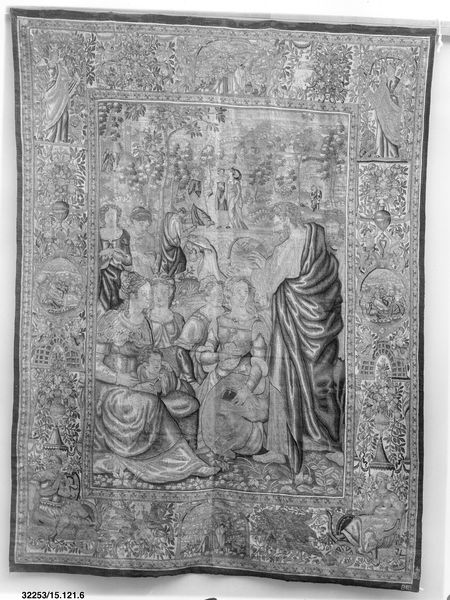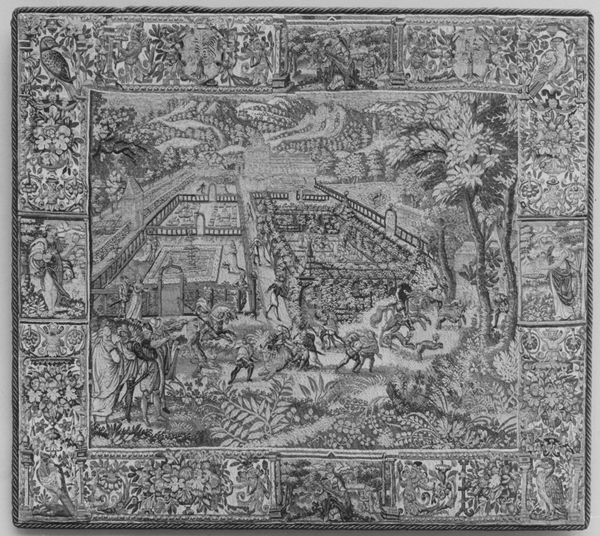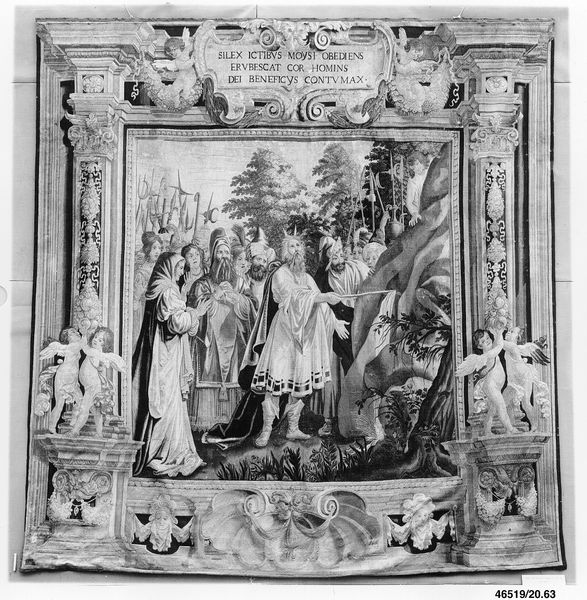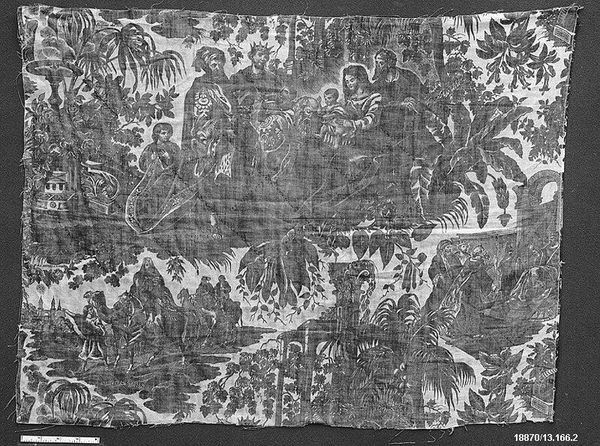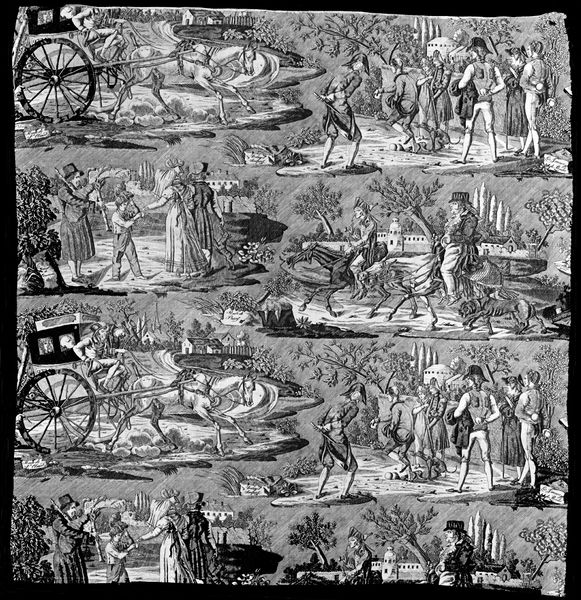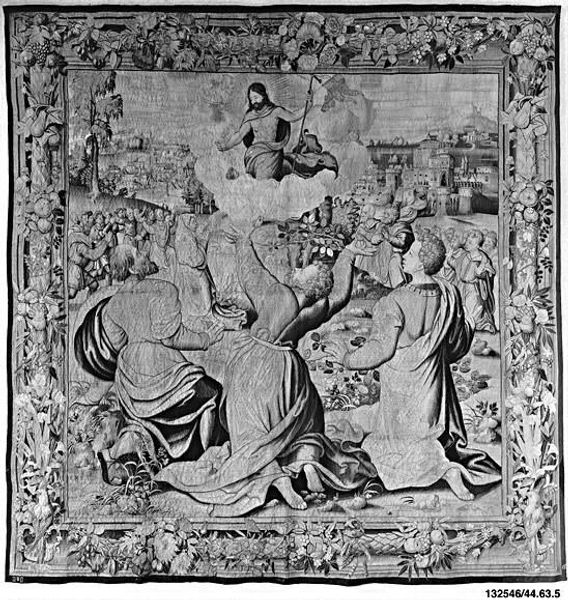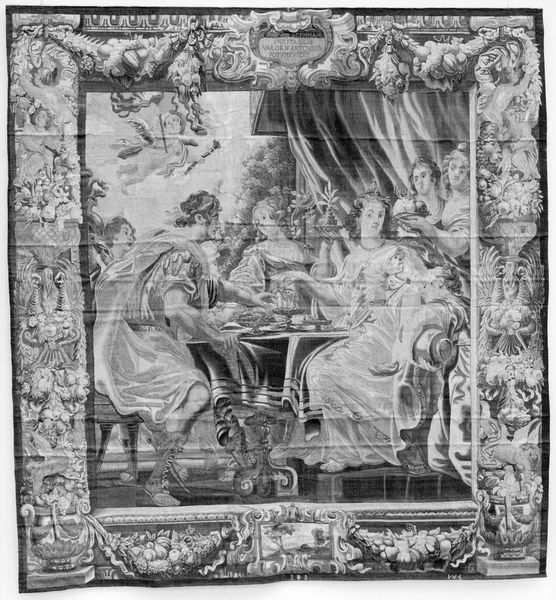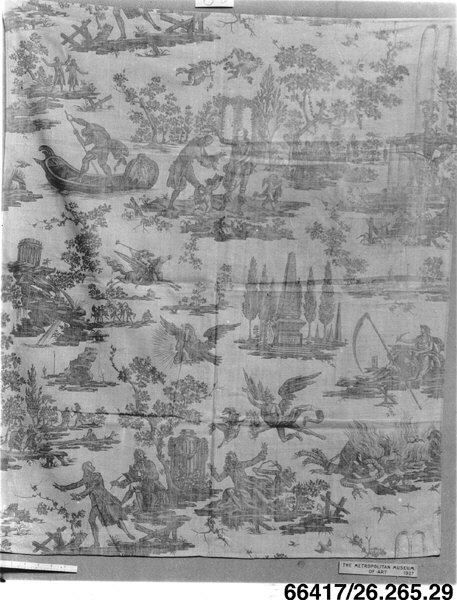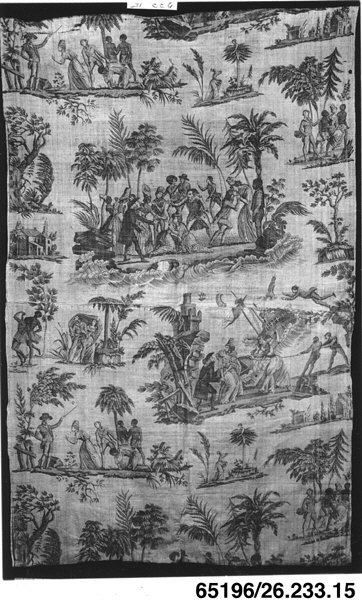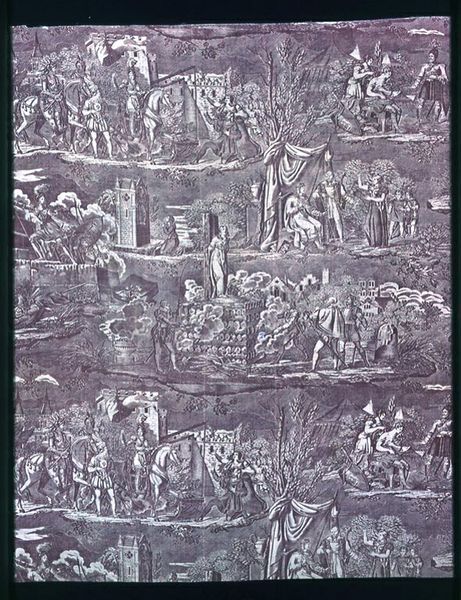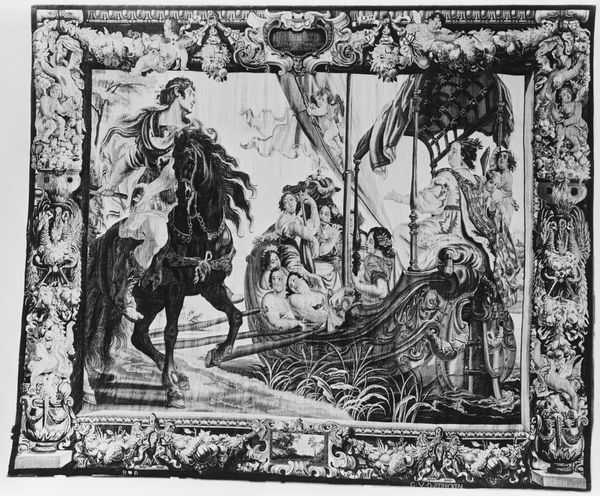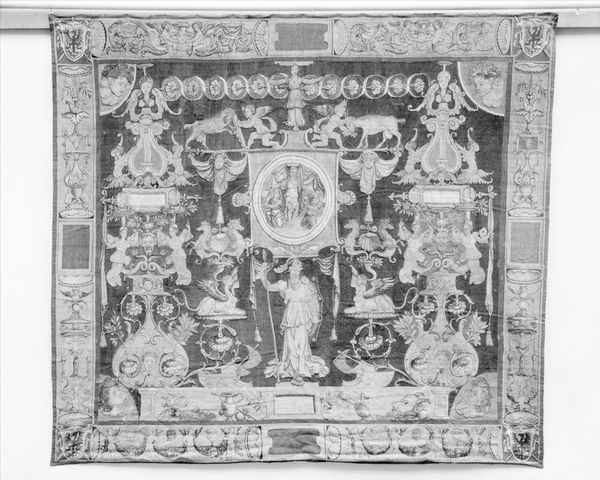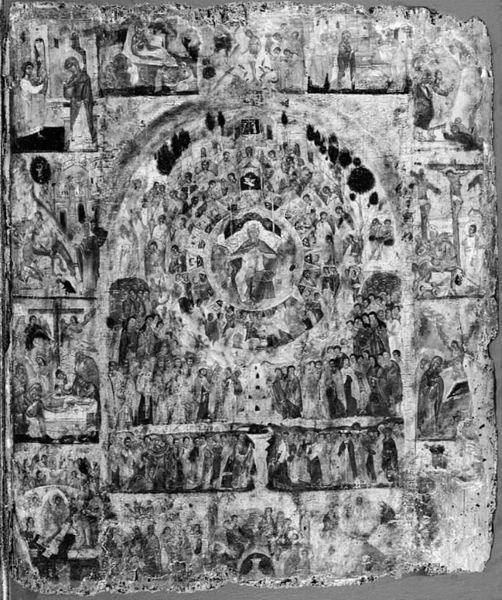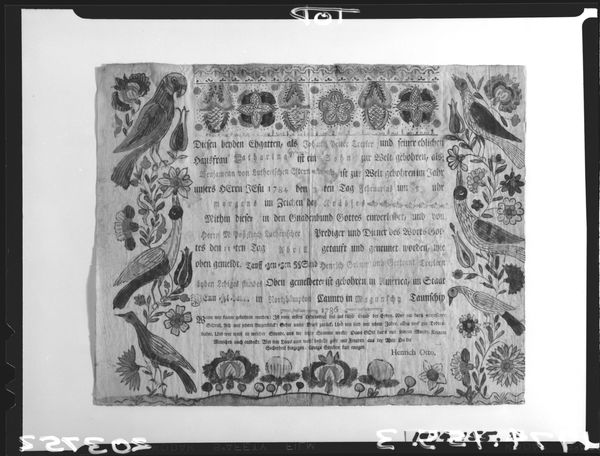
Jeu de boules or The Ball Game (from the Story of Gombaut and Macée set) 1585 - 1605
0:00
0:00
weaving, textile
#
narrative-art
#
weaving
#
bird
#
textile
#
mannerism
#
text
#
hand drawn
#
men
#
pen work
#
history-painting
#
decorative-art
#
intricate and detailed
Dimensions: H. 137, W. 155 inches (348 x 393.7 cm)
Copyright: Public Domain
Jean Leclerc designed this tapestry depicting ‘The Ball Game,’ likely woven in the early 1600s. Made from wool and silk, its very materiality speaks volumes about the culture in which it was created. These prized materials weren’t easily accessible, signifying luxury and status. Tapestries like these were incredibly labor-intensive to produce. Highly skilled weavers would have spent months, maybe even years, interlacing threads on a loom, following Leclerc's design. The density of the weave, the texture of the wool, and the sheen of the silk all contribute to the rich visual experience. Note the incredible detail: the figures, the foliage, even the text, all rendered through meticulous craftsmanship. The act of weaving itself is an important part of this tapestry’s meaning. It’s not just an image; it’s a testament to human skill, patience, and the value placed on artistry during this period. By recognizing the labor and materials involved, we can appreciate the historical and social context embedded within this beautiful artwork, elevating our understanding of art beyond just aesthetics.
Comments
No comments
Be the first to comment and join the conversation on the ultimate creative platform.
